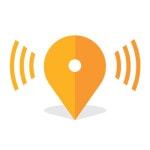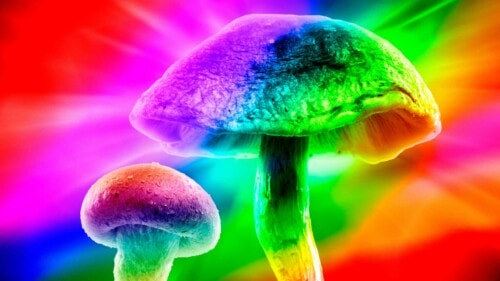It May Be Time to Change Your Mind About Psychedelics Psilocybin, ketamine and MDMA may offer new hope for people dealing with depression, PTSD, cancer and other conditions
Published March 5th, 2022 at 6:00 AM
Above image credit: Psilocybin, ketamine and MDMA may offer new hope for people dealing with depression, PTSD, cancer and other conditions. (Credit | Artur Kornakov)Brenda (her last name is not being revealed to protect her privacy) was in her 60s and grappling with severe anxiety following a second cancer diagnosis when she discovered she qualified for an NYU study investigating therapy for cancer-related distress using psilocybin, the psychoactive compound in “magic mushrooms.”
For Brenda, who had no prior experience with psychedelics, her “trip” was transformative:
“I was just part of this big beautiful world … and that’s what’s going to happen when I die … maybe death is a beautiful thing,” she said.
Brenda had several preparatory sessions with a team of therapists before she was given the experimental drug. Then, for most of that day, she lay comfortably on a couch with eyeshades, headphones and two trusted therapists by her side for the journey. Several subsequent therapy sessions helped her process and integrate what she’d experienced.
“What’s so funny is that nobody can really see it, but yet, for me, everything has changed … I feel more contented and happy about my place in the world,” she said.
New Hope for Mental Health

For those of us who grew up in the ’60s and ’70s, psychedelics may seem like an ancient relic. But thanks to the work of dedicated researchers, and propelled by Michael Pollan’s best-seller, “How to Change Your Mind,” psychedelics are once again in the spotlight, this time as powerful agents for healing depression, PTSD and other soul-crushing conditions.
“This class of drugs, when combined with psychotherapy, represents the first new hope in decades for treating pervasive mental health disorders,” explained Rick Doblin, founder and executive director of the Multidisciplinary Association for Psychedelic Studies (MAPS) in San Jose, California.
A Therapeutic Breakthrough
While all psychedelic drugs (except for ketamine, see below) are still federally illegal, two compounds, psilocybin and MDMA (also known as ecstasy or molly) are currently under investigation in FDA-approved trials, for treatment-resistant depression and PTSD, respectively.
MAPS, which is leading the MDMA study, enrolls the hardest core of PTSD sufferers, including veterans and victims of sexual abuse who haven’t responded to conventional treatments. Recent interim findings from the study riveted the mental health and veterans communities: over half of participants who received MDMA-assisted therapy were so profoundly healed they no longer met the diagnostic criteria for PTSD.
The psilocybin studies are producing similarly impressive results. A landmark study from Johns Hopkins reported in Psychopharmacology showed that a single administration of psilocybin can produce large and sustained decreases in depression and anxiety in patients with a life-threatening cancer diagnosis.
In light of these encouraging findings, the FDA has designated both MDMA and psilocybin-assisted therapies as breakthrough therapies. Industry observers expect these drugs to be rescheduled in the next few years, and once that happens, psychedelic-assisted therapies may become broadly available for a host of conditions.
For older adults, this means that we may be able to experience, in our lifetime, a guided consciousness-expanding therapeutic experience with a trained guide to address depression, anxiety and end-of-life distress. For that reason, this makes now a good time to learn about the brave new world of psychedelics.
A Primer on Psychedelic-assisted Therapies
One of the reasons psychedelic-assisted therapies have generated so much excitement, and captured the attention of the FDA, is how they diverge from classic antidepressants, which simply mask symptoms, are taken for extensive periods, and can cause unwanted side effects.
Currently the only way to legally access psilocybin or MDMA in the U.S. is to enroll in a clinical trial.
Psychedelic-assisted therapy, on the other hand, opens a therapeutic window that enables patients to examine their core issues with insight and understanding. Some achieve immediate and enduring relief after a single course of therapy. For most, the therapy is safe and well tolerated, without side effects.
How do psychedelic drugs work? While their mode of operation isn’t fully understood, psychedelics briefly open a floodgate of new connections in the brain, helping a person break free from deeply entrenched thought patterns and view their life through fresh, more compassionate eyes. For many, but not all, the experience engenders relief from anxiety, depression and other unwanted thoughts and behavior patterns. This capacity to literally change one’s mind is known as neuroplasticity.
What is psilocybin? The psychoactive component found in a variety of mushroom species, psilocybin has traditionally been used sacramentally by indigenous cultures in Latin America. In certain doses, psilocybin can facilitate a profound spiritual experience, which correlates with more successful treatment outcomes. In the U.S., psilocybin is being investigated for treatment of depression, substance-abuse disorders, and end of life distress in the terminally ill, among others.
What is MDMA? A chemical synthesized in the last century, MDMA is considered an empathogen for its ability to heighten feelings of connectedness, compassion and emotional openness. In a therapeutic setting, MDMA helps PTSD sufferers revisit their traumas with compassion and forgiveness, and replace them with new, more constructive internal narratives.
What is ketamine? Ketamine is an anesthetic drug which, in lower doses, has been found to have anti-depressant effects. Used off-label, it is currently the single legally available psychedelic drug in the U.S. Dr. Gita Vaid, a New York-based psychotherapist, finds that some individuals who don’t respond to conventional antidepressants experience immediate relief with ketamine.
How To Access Psychedelic-assisted Therapy
Currently the only way to legally access psilocybin or MDMA in the U.S. is to enroll in a clinical trial. In the meantime, the growing demand for ketamine therapy has led to a surge of new ketamine clinics and even mail-order ketamine services. Vaid warns, however, that using ketamine without the guidance of a trusted therapist can be overwhelming and actually cause more harm than benefit.
Beware of the Hype Around Psychedelics
Dr. Charles Raison, director of clinical and translational research for Usona Institute in Madison, Wisconsin, is concerned about the hype surrounding these agents.
“I believe they are going to be hugely useful, but they’re not going to solve the world’s problems, and I worry that people are expecting that,” said Raison.
What About LSD?
For therapy, LSD’s longer “trip” – about 10 hours – makes it less desirable compared to psilocybin, which lasts about five to six hours, placing fewer physical and mental demands on the patient and the accompanying therapists.
This article first appeared on Next Avenue, a nonprofit news site created by Twin Cities PBS. Abbie Rosner is a Philadelphia-based freelance journalist exploring the many ways psychedelic drugs and their impending legalization stand to impact the way older Americans age and transition.



